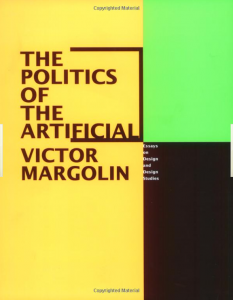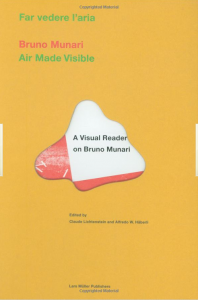Recently there is an issues about immigrants in Malaysia. I overheard conversations in a coffee shop while having my Teh Tarik, a discussion about immigrants from neighboring country occupying various main city in Malaysia, and the main one is Kuala Lumpur. From the conversation I can sense there is unpleasant feeling toward the flood of immigrants gambling their luck in Malaysia. One of the reason are based on the public transport, the fact that the public transport like LRT, Monorails and buses around Kuala Lumpur are now mostly been occupied by non-Malaysian. I kept my ears wide open for the next argument. One person said it is annoying to talk the public transport and have to squeeze in with the immigrants. Apparently according to the man he knows just by the look of it that most of the passengers are immigrant, when he was asked by his friends about it. Another said that its unfair and that he felt that the public transport was meant and created for Malaysian and not for others. He disagree that the immigrants are allowed to be on the public transport. Wow! That is a shocking statement for me!
I continued listening to their conversation, expressing their feelings towards the Malaysia new dilemma. The discussion continued and touches on topic like the way the immigrant dress, as such they trying to dress neatly; then move to the way they behave and language they speak and so on..It is clear to me that these immigrants that they were discussion is not the professional expatriate , instead it is the skills worker, more on the contractor and so-called cheap labour. The discussion continue ranting about how their tax are used to full fill the needs of the immigrants. I listened to the conversation until they leave the place. Each one of them walk towards their car parked at the LRT station’s carpark and drive away.
Now, that conversation makes me think. First, why bother felling annoyed about the immigrants occupying the LRT or other public transport when they are not interested to use it? Most of the time when I am in Kuala Lumpur, I mainly traveled using public transports, and yes there are plenty of immigrants occupying the train, but what is the problem? They don’t seems dangerous to me, in fact I have witness several times where most of them are kindhearted. An old lady was given a sit by an indonesian man, and an bangladesh man assist a blind man from the LRT to the exit. Now when it comes to behaviors, I would blame the local. See, when people migrated to another country, first few things that they will do is to observed what kind of lifestyle and behaviors the society they living in. It is rare that the immigrants strongly portrayed their origin. At least not in first few months. They might kept their way of dressing, but to be able to blend in to the new society they need to be able to understand, and this is done through observations. They are in Malaysia to work, and should Malaysian be happy that that will encourage business and skills workers? That it also will generate flux of culture between both. That there are lots of things to learn about the immigrants? And that they should not be treated badly and downgraded? Now what we see today in Kuala Lumpur is  the reflections of the Malaysian society. Being selfish and arrogant will not help to nurture the relationship between the immigrant and the local. Hatred will not lead us anywhere. Sharing and showing that we love the facilities that was created for all is one way to facilitate the immigrant to understand us. If we make fun of the way they dress, then we should start looking at ourself in the mirror. The immigrant is our reflection, so what ever we think about the new immigrants, it is a reflections of our new nation.
There are many books out there that are useful to look at, but these are my favorites. These are the books that I refer the most in my research. I divided these books into categories and you will find links to Amazon online to get the book, not that I am promoting Amazon, but through Amazon you will be able to view some content in the book. I hope this link will be able to help people who is interested in pursuing research, and further study in relation to graphic design, identity, popular culture, and design methods.
Writing research
Graphic Design practice
Many graphic design books are published from America and Britain. That statement itself said a lot. It means the graphic design activities has been practices, studies, appreciated and acknowledge its roles a lot more in these countries in comparison to South East Asian countries. In many south east asian countries, graphic designers are still searching for its acknowledgments and defining its roles. These are the books, guides and references to graphic design practices and voices.
Design and social context
Design cannot separated from the social context. It is in fact plays the important roles in the society and stimulating the social context. Practitioner and scholar such as S.Heller, V.Margolin, B.Mau and many more discuss about the involvement of design activities in the society.
Visual Theory
As visual theory is a very broad areas, and the names of the books can be endless, it all depends to what are the areas in visual theory that you interested to explore. In my research I am interested in relation to pop-culture, cultural identity, ethnicity, and national identity. Scholars such as R.Barthes, S.Hall, J.Williamson, B.Munari are among the important texts that have provided me insight and understanding of how to look and analyze visual.
Design Research Methodology
Design research is fairly a new area that undergo its research development. Most of the design research methodology are derived from design practices in arts, architecture, engineering and sciences. Only recently design has took its own part and described its own ways of practice which mainly dealing with visual design elements such as color, typography, space, lines, images etc. It also involved the look and the feel of the artifacts. The methodology is based on designers reflections on their own practice and how they create their artifacts.
Cultural Studies and Sociology
If you have similar interest as mine, here are the list of books that I recommended for you to read. Of course there are much more than this list but this will be a good start to search for the books if you don’t know where to begin.
DESIGN
Communication Design – FRASCARA, Jorge (2004)
The Design of Everyday Things – NORMAN, Donald A. (1998)
In The Bubble – Designing in a Complex World – THACKARA, John (2005)
An Introduction to Design and Culture from 1900 to the present – SPARKE, Penny. (2004)
GRAPHIC DESIGN
Looking Closer – Critical Writing in Graphic Design – BIERUT, M., DRENTTEL, W.,
& HELLER, S. (2006)
Design Literacy, Understanding Graphic Design – HELLER, Steven. (2004)
No More Rules – PAYNOR, Rick. (2003)
Citizen Designer – Perspectives on design responsibility – edited by HELLER, S. and VIENNE, V. (2003)
What Is Graphic Design – NEWARK, Quentin (2002)
CULTURE
Imagine Communities – ANDERSON, Benedict (2006)
Massive Change – MAU, Bruce. (2004)
Authenticity – BOYLE, David (2003)
Orientalism – SAID, Edward. W (2003)
No Logo – KLEIN, Naomi. (2000)
Global Nature, Global Culture – FRANKLIN Sarah., LURY Celia., STACEY, J. (2000)
Ethics Future – The State of Identity Politics in Asia – Edited by GOMEZ, NANDY, SENANAYAKE, CZARNECKA. (1999)
BRANDING
How to Brand A Nation – OLINS, Wally (2005)
Brand America – The mother of all brands – ANHOLT ,Simon (2004)
Pro Logo- Brands as a factor of progress – CHEVALIER, M.MAZZALOVO, G. (2004)
Brand New Justice – ANHOLT, Simon (2003)
The Brand Gap – How to Bridge The Distance Between Business Strategy and Design – NEUMEIER, Marty (2003)
Brand New Justice – ANHOLT, Simon (2003)
Citizen Brand – GOBE, Marc (2002)
Emotional Branding – GOBE, Marc (2001)
MALAYSIA
Malaysia – A Pictorial History 1400-2004 – MOORE, Khadijah Wendy (2007)
Building Cultural Nationalism in Malaysia – Identity, Representation, and Citizenship – DANIEL, T.P. (2005)
Dilema Melayu – MOHAMAD, Mahathir (2003)
The Other Malaysia – NOOR, A. Farish (2002)
The Shaping of Malaysia – KAUR, A. & MATCALFE, I. (Eds.) (1999)
Malaysian Flavours – Insights Into Things Malaysian – LEE, S. K. (1996)
Lat ‘The Kampung Boy – ‘LAT’ M. N. K. (1995)
RESEARCH
Design Research – DOWNTOWN, Peter (2003)
The Craft Of Research – BOOTH, W.C., COLOMB, G.G. & WILLIAMS, J.M (2003)
































